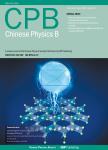Exchange bias in ferromagnet/antiferromagnet bilayers
Exchange bias in ferromagnet/antiferromagnet bilayers作者机构:Shanghai Key Laboratory of Special Artificial Microstructure Materials & Technology and School of Physics Science and EngineeringTongji UniversityShanghai 200092 Department of PhysicsNanjing University
出 版 物:《Chinese Physics B》 (中国物理B(英文版))
年 卷 期:2014年第23卷第2期
页 面:1-13页
核心收录:
学科分类:08[工学] 080501[工学-材料物理与化学] 0805[工学-材料科学与工程(可授工学、理学学位)] 0704[理学-天文学]
基 金:Project supported by the National Natural Science Foundation of China (Grant Nos.10174014,60271013,60490292,10574026,50625102,50871030,10974032,51171129,and 51201114) the National Basic Research Program of China (Grant Nos.2009CB929201 and 2010CB923401)
主 题:exchange bias ferromagnet antiferromagnet bilayers
摘 要:Since the exchange bias (EB) effect was discovered in the Co/CoO core-shell nanoparticles, it has been extensively studied in various ferromagnet (FM)/antiferromagnet (AFM) bilayers due to its crucial role in spintronics devices. In this article, we review the investigation of the EB in our research group. First, we outline basic features of the EB, including the effects of the constituent layer thickness, the microstructure and magnetization of the FM layers, and we also discuss asymmetric magnetization reversal process in wedged-FM/AFM bilayers. Secondly, we discuss the mechanisms of the positive EB and the perpendicular EB. Thirdly, we demonstrate the hysteretic behavior of the angular dependence of the EB and analyze the EB training effect. Finally, we discuss the roles of the rotatable anisotropy in the two phenomena.



